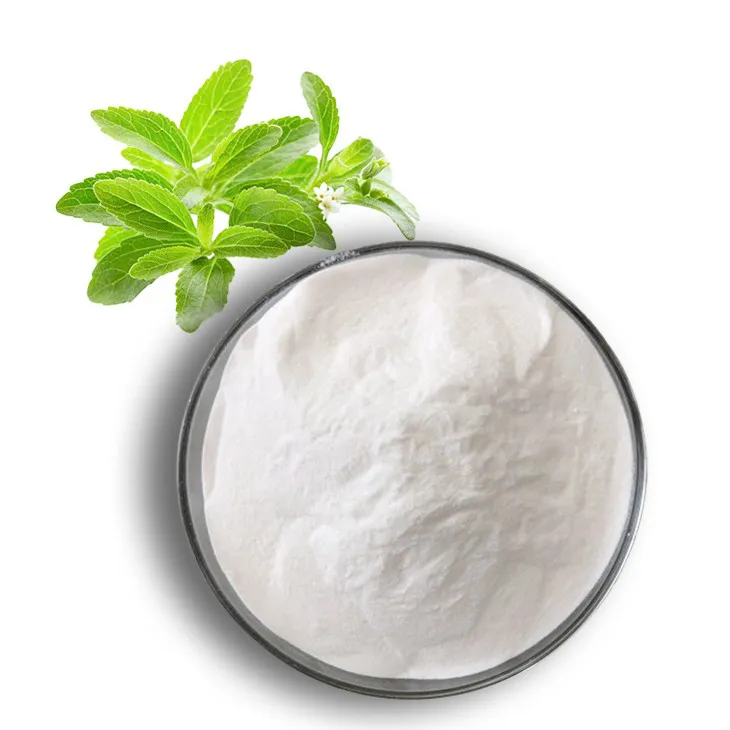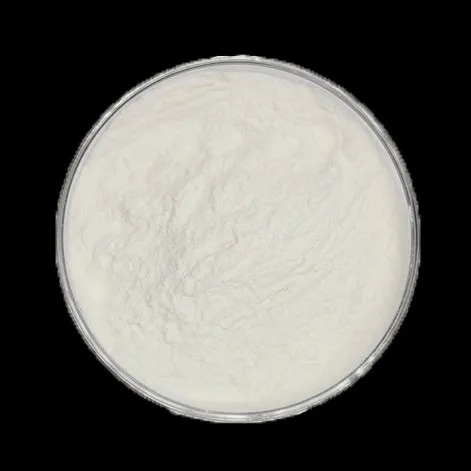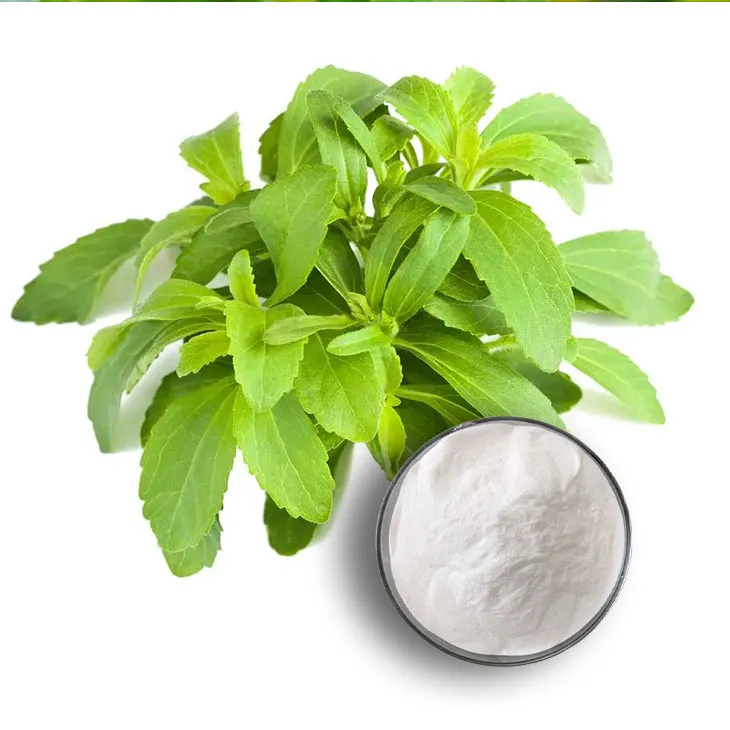- 0086-571-85302990
- sales@greenskybio.com
The flavor of mature stevia and natural stevia extract.
2024-11-11

1. Introduction
Stevia, a natural sweetener, has gained significant popularity in recent years as an alternative to traditional sugar. Among the different forms of stevia, the taste of mature stevia and natural Stevia Extract are of particular interest. Understanding their distinct flavor profiles is crucial for both consumers and manufacturers in the food and beverage industry. This article aims to provide an in - depth exploration of the flavor differences between mature stevia and natural Stevia Extract, considering aspects such as chemical composition, sensory experience, and application in various products.

2. Chemical Composition and its Impact on Flavor
2.1 Mature Stevia
Mature stevia plants contain a variety of compounds that contribute to their taste. Stevioside and rebaudioside A are two of the most prominent sweet - tasting compounds in stevia. In mature stevia, these compounds are present in specific ratios. Stevioside, for example, has a relatively high concentration in the plant. It has a very sweet taste, but it can also have a slightly bitter or licorice - like aftertaste. This is due to its chemical structure, which interacts with the taste receptors on our tongues in a particular way. The presence of other minor compounds in mature stevia, such as flavonoids and phenolic acids, can also modulate the overall flavor, adding complexity to the taste profile.
2.2 Natural Stevia Extract
Natural stevia extract is obtained through a process of extraction from stevia leaves. During this extraction, different compounds are concentrated. The main sweet - tasting components, stevioside and rebaudioside A, are often purified to a certain extent. In the extract, the ratio of these compounds can be adjusted depending on the extraction method. For example, some extracts may be rich in rebaudioside A, which is known for its clean, sweet taste with less of the bitter aftertaste associated with stevioside. The extraction process may also remove some of the minor compounds present in the original stevia plant. This can result in a more pure and consistent sweet taste in the stevia extract compared to the taste of the whole mature stevia plant.

3. Sensory Experience
3.1 Taste Perception
When it comes to taste perception, the differences between mature stevia and natural stevia extract are quite noticeable. When tasting mature stevia, the initial sweetness is very intense, but it is quickly followed by the aforementioned bitter or licorice - like aftertaste. This can be a bit jarring for some consumers who are not accustomed to it. On the other hand, natural stevia extract, especially those high in rebaudioside A, provides a more smooth and lingering sweet taste. The sweetness builds gradually on the palate and does not have the same sharp transition to an off - flavor as in mature stevia. The taste of the extract is often described as more refined and closer to the sweetness of sugar, without the calories.
3.2 Aroma
The aroma also plays an important role in the sensory experience. Mature stevia has a characteristic green, herbaceous aroma. This aroma is due to the presence of various volatile compounds in the plant. When the stevia is consumed, either in its natural form or as part of a product, this aroma can influence the overall perception of the taste. In contrast, natural stevia extract may have a less pronounced herbaceous aroma. The extraction process can sometimes reduce or modify the volatile compounds responsible for the aroma. However, some high - quality extracts may retain a subtle, pleasant aroma that complements the sweet taste, enhancing the overall sensory experience.

4. Application in Various Products
4.1 Beverages
- In the beverage industry, both mature stevia and natural stevia extract are used as sweeteners. However, their usage depends on the desired flavor profile of the final product.
- Mature stevia, with its more complex flavor, may be used in herbal teas or certain specialty drinks where the characteristic bitter or licorice - like notes can add an interesting dimension to the flavor. For example, in some traditional medicinal teas, the taste of mature stevia can blend well with the other herbal components.
- Natural stevia extract, on the other hand, is more commonly used in mainstream beverages such as soft drinks and fruit - flavored drinks. Its clean, sweet taste can mimic the sweetness of sugar more closely, making it a suitable replacement without sacrificing the overall taste of the product. In these beverages, the lack of a strong aftertaste is crucial to ensure consumer acceptance.
4.2 Food Products
- When it comes to food products, the choice between mature stevia and natural stevia extract also varies. In baked goods, for instance, natural stevia extract is often preferred. The consistent sweet taste of the extract is easier to work with in recipes, and it does not introduce any unwanted flavors that could interfere with the final product's taste. In addition, the lack of a bitter aftertaste makes it a better option for sweetening cakes, cookies, and pastries.
- Mature stevia can be used in certain savory - sweet dishes, where its complex flavor can add a unique touch. For example, in some Asian - inspired recipes that combine sweet and salty flavors, the bitter - sweet taste of mature stevia can enhance the overall flavor profile. However, it requires careful consideration and adjustment of the recipe to balance out the flavors.
4.3 Confectionery
- In confectionery, the use of stevia has been on the rise as a healthier alternative to sugar. Natural stevia extract is widely used in candies and chocolates. Its ability to provide a pure sweet taste without the bitter aftertaste makes it suitable for creating products with a smooth and pleasant flavor. Manufacturers can use stevia extract to produce low - calorie or sugar - free confectionery items that still satisfy consumers' sweet tooth.
- Mature stevia is less commonly used in confectionery due to its more complex and potentially off - putting flavor for the average consumer. However, in some artisanal or niche confectionery products, it could be explored for its unique flavor characteristics, perhaps in combination with other natural sweeteners to balance out the taste.

5. Factors Affecting the Flavor of Stevia
5.1 Growing Conditions
The growing conditions of stevia plants can have a significant impact on their flavor. Factors such as soil type, climate, and sunlight exposure can influence the chemical composition of the plants. For example, stevia plants grown in well - drained, fertile soil may have a different balance of sweet - tasting compounds compared to those grown in less ideal soil conditions. Similarly, plants exposed to more sunlight may produce higher levels of certain compounds, which can affect the overall taste. These differences in growing conditions can result in variations in the flavor of both mature stevia and the stevia extract obtained from it.
5.2 Processing Methods
As mentioned earlier, the processing methods used to obtain natural stevia extract play a crucial role in determining its flavor. Different extraction techniques can result in extracts with varying levels of purity and different ratios of the main sweet - tasting compounds. For example, some extraction methods may use solvents that can affect the final flavor of the extract. Additionally, post - extraction processing steps such as purification and concentration can also modify the flavor. In the case of mature stevia, processing steps such as drying and grinding can impact its flavor by altering the chemical and physical properties of the plant material.
6. Conclusion
In conclusion, the flavor of mature stevia and natural stevia extract differ in several aspects. The chemical composition, sensory experience, and application in various products all highlight their distinct characteristics. While mature stevia has a more complex and potentially challenging flavor profile, natural stevia extract offers a more refined and consistent sweet taste. Understanding these differences is essential for consumers who are looking for natural sweeteners and for manufacturers aiming to create products with the desired flavor profiles. By considering factors such as growing conditions and processing methods, it is possible to further optimize the flavor of stevia products, whether in its natural or extract form, to meet the diverse needs of the market.
FAQ:
What is the chemical composition difference between the taste of mature stevia and natural stevia extract?
Mature stevia contains a variety of natural compounds that contribute to its taste. For example, it has steviol glycosides which are the main sweet - tasting components. However, in natural stevia extract, these steviol glycosides are concentrated. The extraction process may also remove some other minor compounds present in the mature stevia plant. This difference in chemical composition leads to variations in their taste intensity and flavor nuances.
How does the sensory experience of the taste of mature stevia differ from that of natural stevia extract?
The taste of mature stevia can be more complex in a sensory context. It may have some earthy or grassy undertones along with the sweetness due to the presence of other substances in the whole plant. In contrast, natural stevia extract often has a purer, more concentrated sweet taste. The aftertaste can also be different. Mature stevia might have a more lingering and slightly different aftertaste compared to the relatively cleaner aftertaste of the natural stevia extract.
Are there different applications in various products based on the taste differences between mature stevia and natural stevia extract?
Yes, there are. In products where a more natural and complex flavor profile is desired, such as some herbal teas or natural - flavored beverages, the taste of mature stevia can be a better fit. Its earthy undertones can add an extra dimension to the overall flavor. For products that require a high - intensity, pure sweetening effect like some low - calorie candies or tabletop sweeteners, natural stevia extract is often preferred as it can provide a more intense and consistent sweetness without the additional flavor nuances of the whole stevia plant.
How can one detect the taste difference between mature stevia and natural stevia extract?
One can detect the taste difference through direct tasting. Start by tasting a small piece of mature stevia leaf (if possible) and note the initial sweetness, the presence of any other flavors like the aforementioned earthy or grassy notes, and the aftertaste. Then, taste a product containing natural stevia extract. Notice the more straightforward, intense sweetness and the cleaner aftertaste. Another way is to compare products that use either mature stevia or natural stevia extract as the sweetening agent. For example, compare two similar - flavored herbal teas, one sweetened with mature stevia and the other with natural stevia extract.
Does the taste of mature stevia or natural stevia extract change over time?
The taste of both can potentially change over time. For mature stevia, if it is not properly stored, the compounds in it may degrade, affecting its taste. It may lose some of its sweetness or develop off - flavors. Natural stevia extract, depending on its packaging and storage conditions, can also experience changes. For example, exposure to heat or light may cause some chemical reactions in the extract, leading to a change in its taste profile, such as a decrease in sweetness or the development of an unpleasant aftertaste.
Related literature
- The Chemistry and Taste of Stevia: A Comprehensive Review"
- "Comparative Analysis of Stevia in its Natural and Extract Forms: Flavor and Application"
- "Taste Profiles of Stevia: Mature Plant vs. Extract in the Food Industry"
- ▶ Hesperidin
- ▶ Citrus Bioflavonoids
- ▶ Plant Extract
- ▶ lycopene
- ▶ Diosmin
- ▶ Grape seed extract
- ▶ Sea buckthorn Juice Powder
- ▶ Fruit Juice Powder
- ▶ Hops Extract
- ▶ Artichoke Extract
- ▶ Mushroom extract
- ▶ Astaxanthin
- ▶ Green Tea Extract
- ▶ Curcumin
- ▶ Horse Chestnut Extract
- ▶ Other Product
- ▶ Boswellia Serrata Extract
- ▶ Resveratrol
- ▶ Marigold Extract
- ▶ Grape Leaf Extract
- ▶ New Product
- ▶ Aminolevulinic acid
- ▶ Cranberry Extract
- ▶ Red Yeast Rice
- ▶ Red Wine Extract
-
Garcinia Cambogia Extract
2024-11-11
-
Senna Leaf Extract
2024-11-11
-
Cranberry Extract
2024-11-11
-
Sophora Flavescens Root Extract
2024-11-11
-
Jujube Extract
2024-11-11
-
Curcumin Extract
2024-11-11
-
Cat Claw Extract
2024-11-11
-
Maitake Mushroom Extract
2024-11-11
-
Lily extract
2024-11-11
-
Nettle Root Extract
2024-11-11





















